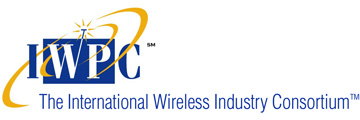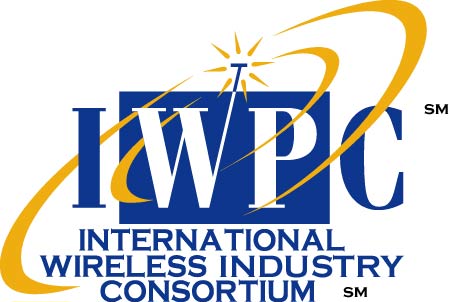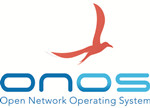5G End-to-End Networks <6GHz
Exploring new network deployment paradigms and innovative service offerings leading to economically efficient business-models. How will networks migrate from previous generations and how will new approaches
to network functions bring promised efficiencies?
Hosted by:

When
March 15-17, 2017
Introduction
Spectrum below 6 GHz possesses technical advantages and eco-system availability to provide an immediate solution to deploy 5th generation networks. Expectedly, sub 6 GHz bands will be a key enabler for 5G, and with that, usher in new network deployment paradigms and innovative service offerings leading to economically efficient business-models. What needs to be seen now is how the path to 5th generation of mobile broadband unravels in this spectrum, how end to end networks migrate from previous generation, and how new approaches to network functions bring promised efficiencies to market.
Workshop Goals
- Evaluate sub 6GHz spectrum for developing and deploying 5th generation network
- Regulatory and technical aspects of sub 6 GHz spectrum in meeting IMT2020 requirements
- Understand and evaluate advantages and compromises of sub 6 GHz 5G deployment
- Get a readout on existing hardware (RFIC, antenna, PA) and further optimizations required to enable a 5G product
- Innovations and optimizations specific to 5G in sub 6 GHz spectrum compared to LTE Advanced Pro
- Discuss standards and regulatory paths toward successful 5G network deployment
- Discuss and evaluate migration paths to 5G network, including coexistence with LTE
- Understand potential killer applications and use cases for sub 6 GHz 5G
- Evaluate innovative het-net deployment use-cases in sub 6 GHz 5G
- Evaluate virtualization approaches to radio and core network redesign
- Explore the viability of 5G in unlicensed spectrum?
Agenda
|
DAY 1 Wednesday
|
|
|
| 7:00 PM |
Evening Reception - hosted by:
|
Registration at hotel |
|
DAY 2 Thursday 7:00 AM
|
Breakfast and Registration continues |
Hotel
|
|
8:00 AM |
Welcome and Introductions
|
|
|
9:00 AM |
Host Keynote Opening Remarks and Presentation
|
Keynote Presentation
VP. Technology Development
|
|
10:00 AM |
Networking Break |
|
10:40 AM |
Exploring Regulatory Paths Towards Successful 5G Network Deployment
|
FCC Armchair Session
Commissioner
Understanding the Regulatory Landscape
Senior Advisor
|
|
12:00 Noon |
Networking Lunch |
|
1:00 PM |
Carrier Perspectives
|
Network planning for the next "G"
MTS Systems Architecture Engineer
5G Strategy and Architecture for B41
Director, Technology Innovation and Architecture
|
|
2:20 PM |
Architectural Considerations
|
5G New Radio @ sub-6GHz: Features and Performance
Director, Technology Innovation and Architecture
|
|
3:00 PM |
Networking Break |
|
|
3:40 PM |
Architectural Considerations (continued)
|
5G Network - End to End Perspective
Principal Consultant
AOS- Paving the Way to 5G
Director of Product Management
Mobile CORD an Open Reference Solution Towards 5G
ONOS Project Lead
|
|
5:45 PM |
Adjourn for Day |
|
|
6:45 PM |
Networking Dinner - Dante Ristorante
|
Hosted by:
|
|
DAY 3 Friday 7:00 AM
|
Networking Breakfast |
|
8:00 AM |
Carrier Perspective, continued |
Carrier View of 5G in Unlicensed or Shared Spectrum
Engineer, System Architecture
|
|
8:40 AM |
Regulatory Considerations, continued
|
CBRS Spectrum Sharing Overview; a Path to 5G Spectrum Management
Director of Technology, Standard and Regulatory
|
|
9:20 AM |
RAN Considerations
|
In-Building/Campus Enterprise vRAN and Open Mobile Edge Cloud (OMEC)
CMO
|
|
10:00 AM |
Networking Break |
|
|
10:40 AM |
Technology Enablers
|
Antenna Systems for 5G Applications
Chief Scientist
Enabling Technologies for Massive MIMO Systems
CTO Communications Business Unit
5G Transport Leveraging Massive MIMO
Wireless System Architect
|
|
12:40 PM |
Networking Lunch |
|
|
1:40 PM |
Technology Enablers
|
End to End Testing and Certification Framework for 5G Applications, Services and Devices R&D Researcher
Testing Aspects from Field to Lab – How to tackle the application driven world?
Technology Manager
|
3:40 PM |
Closing Discussion |
Key take-aways, issues and actions, led by host |
FAQs
- What is the deadline for presentation/handout materials?
- What can I do to prepare for speaking an at IWPC workshop?
- Who are the attendees?
- What are the costs/registrations fees?
- Hotel information?
- What are the travel options from the airport to the hotel?
- Are there any audiovisual requirements?
- Will business cards be collected?
- What is the dress code?
- How will handout materials be provided?
- What is the deadline for
presentation/handout materials?
Deadline for electronic version of presentation/handout materials: Monday, March 6, 2017.
- What can I do to prepare for speaking an at IWPC workshop?
Click on the link below for a short video guide regarding preparing for and improving your IWPC presentation:
- Who are the attendees?
- We do not permit the Press.
- We do not permit Analysts.
- We do not permit Consultants.
- We do not permit 3rd party sales reps.
- We only permit "first hand knowledge experts" in business and technology issues, prepared to contribute to the discussion.
- What are the costs/registrations fees?
ALL Hosts, Speakers, Panel Members and Attendees will be asked to cover out-of-pocket workshop costs such as conference room costs, food (Social Reception plus First Day breakfast/lunch/dinner plus Second Day breakfast/lunch plus Breaks), audio/visual costs, etc.
These costs will be $837 (USD) per person. (For IWPC Members only.)
ALL Hosts, Speakers, Panel Members and Attendees will be asked to pay this fee in advance with either Visa, MasterCard, American Express, cash, personal check or business check. Make checks payable to IWPC.
- Hotel information?
Hilton Washington Dulles Airport
13869 Park Center Road
Herndon, VA 20171
Phone: 1-703-478-2900
Hotel WebsiteThe IWPC room block rate is $159.00.
The cut-off date for reservations is Thursday, March 2, 2017. After that date, rooms cannot be guaranteed at the IWPC rate. You can make your reservations on-line at:
http://www.hilton.com/en/hi/groups/personalized/I/IADAHHF-IWPC-20170313/index.jhtml?WT.mc_id=POG
- What are the travel options from the airport to the hotel?
Directions and transportation options will be posted as soon as possible.
- Are there any audiovisual requirements?
A Computer Projector will be available for the speakers.
In addition, we audiotape all presentations and the interactive discussions. Post workshop, presentations are made available to IWPC Members on the IWPC WEB site, along with “recordings” of all presentations and panel sessions.
- Will business cards be collected?
Business cards will be collected at the door from all attendees. We will make copies of these cards, which will be available to all who provided a business card.
- What is the dress code?
Business casual suggested. No ties, please!
- How will handout materials be provided?
For ALL IWPC members:
All IWPC members are invited to submit materials to be included in the online workshop folder in the IWPC Research Library. This should NOT BE SALES MATERIALS. Rather, we suggest it contain technical information about your technology as it relates to the workshop topics.
For all companies who will be making a presentation at the Workshop:
You are invited to submit an advance copy of your presentation, complete with graphics and illustrations.
These materials will be included on the IWPC website Research Library.
Please submit these materials either by email, as a Word for Windows file, Power Point files or PDF files.
- Go to www.iwpc.org
- Click on IWPC Activities Tab
- Under Workshops: 5G End-to-End Networks <6GHz
- Click on Submit Presentation Proposal. Complete the form and attach your presentation.
- Once we receive your presentation we will send an email confirmation.
AS BACKUP, PLEASE BRING AN ELECTRONIC COPY USB STICK WITH YOU!










